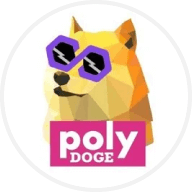Vznik platformy Ethereum způsobil revoluci na trhu s kryptoměnami a otevřel cestu k vývoji decentralizovaných aplikací (dApps). DappRadar (RADAR) je platforma, která se věnuje nabízení cenných poznatků o světě dApps. Poskytováním komplexních dat a analýz si DappRadar klade za cíl zvýšit transparentnost a umožnit uživatelům orientovat se v rychle se vyvíjejícím prostředí decentralizovaných aplikací.
Co je to DappRadar
DappRadar je platforma založená na blockchainu, která nabízí přesná a včasná data a statistiky o trhu s dApp. S posláním bojovat proti zavádějícím informacím nabízí DappRadar uživatelům spolehlivý a komplexní web pro agregaci tržních dat.
Údaje o DApp poskytované na DappRadar jsou prezentovány v žebříčcích a portfoliích v závislosti na typu a povaze dApp. Platforma rovněž poskytuje informace o nezastupitelných tokenech (NFT) a širším trhu decentralizovaných financí (DeFi).
DappRadar tým
DappRadar založili Skirmantas Januśkas a Dragos Dunica, kteří zastávají funkce CEO a CDO. Součástí zakládajícího týmu tohoto projektu založeného na blockchainu je také zkušený odborník na kryptoměny a blockchain Patrick Barile (COO). DappRadar podporují některé z předních firem venture kapitálu v oboru, například Blockchain Ventures, Nordic Ninja a Prosus Ventures.
Jak DappRadar funguje
DappRadar funguje prostřednictvím uživatelsky přívětivých webových stránek, které jsou jednoduché na navigaci a zcela zdarma. Díky své přístupnosti se stal nepostradatelným nástrojem pro obchodníky, kteří touží získat hlubší přehled o vznikajícím trhu s dApp . Díky svému globálnímu zaměření a decentralizované povaze přináší aplikace DappRadar svým uživatelům řadu výhod.
Jednou z klíčových předností aplikace DappRadar je její flexibilita. Uživatelé mají možnost bez námahy a bezpečně sledovat více než 3 000 dApps na široké škále blockchainů. Kromě toho platforma nabízí funkci sledování portfolia, která uživatelům umožňuje sledovat jejich denní zisky, ztráty a celkový přehled o jejich portfoliu.
Nativní token DappRadar: RADAR
RADAR je nativní token projektu, který byl spuštěn v roce 2021. Byl navržen tak, aby uživatelům poskytoval přístup ke všem zajímavým funkcím platformy. RADAR slouží také jako odměnový token, který bude proporcionálně rozdělen mezi členy komunity za jejich příspěvek k růstu platformy.
Kromě toho je RADAR základem ekosystému decentralizované autonomní organizace (DAO) DappRadar a funguje jako token pro správu.
RADAR tokenomika
Celková zásoba tokenů RADAR je 10 miliard, které odpovídají standardu ERC-20 na blockchainu Ethereum. Cílem RADAR je podporovat zapojení komunity a poskytovat pobídky k aktivní účasti, a zajistit tak živoucí a udržitelný ekosystém pro všechny zúčastněné strany.
Staking je důležitým aspektem ekosystému DappRadar. Umožňuje držitelům tokenů získat specifické odměny za uzamčení prostředků na určité období. RADAR můžete stakovat buď jako běžný člen, nebo jako člen PRO, což znamená, že máte možnost zavázat minimálně 5 000, resp. 30 000 RADAR.
Chcete-li začít, navštivte webové stránky DappRadar. Přejděte na záložku "Staking" a vyberte si preferovanou možnost členství. Připojte svou peněženku k síti, vyberte částku RADAR, kterou chcete stakovat, a dokončete proces. Po dokončení můžete začít získávat odměny jako člen DappRadar.
RADAR poskytuje držitelům přístup k funkcím platformy, slouží jako platidlo za transakce, umožňuje vývojářům vytvářet aplikace a nabízí hlasovací práva v ekosystému.
RADAR je rozdělen takto:
- 40 % bylo přiděleno loajálním členům komunity.
- 25,25 % bylo vyčleněno pro tým DappRadar a akcionáře.
- 24,75 % šlo do pokladny DappRadar, která pokrývá výdaje na vývoj, fundraising, partnerství a marketing.
- 10 % bylo rozděleno během úvodního airdropu.
Budoucnost DappRadar
DappRadar se snaží zajistit udržitelnost své platformy tím, že vývojářům, uživatelům a zúčastněným stranám na rozvíjejícím se trhu s dApps důsledně poskytuje cenné a přesné tržní metriky. Poskytováním podrobných postřehů, grafů, statistik a dat se DappRadar snaží být spolehlivým a důvěryhodným zdrojem informací. Platforma se také snaží neustále přizpůsobovat tržním trendům a vylepšovat své služby, čímž zajišťuje jejich relevanci a užitečnost v dlouhodobém horizontu.


















Sociální sítě